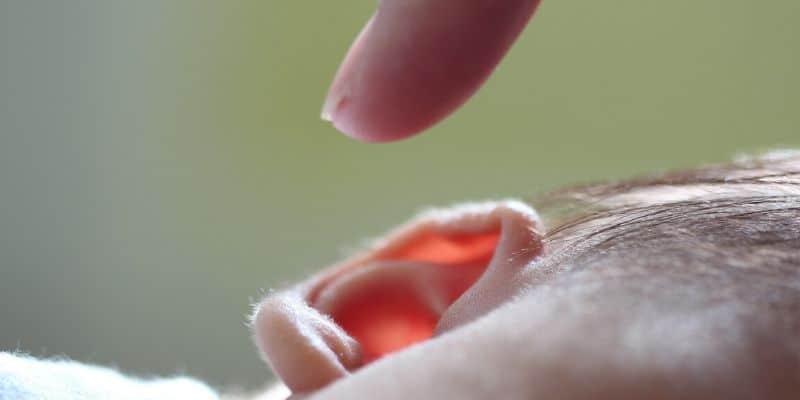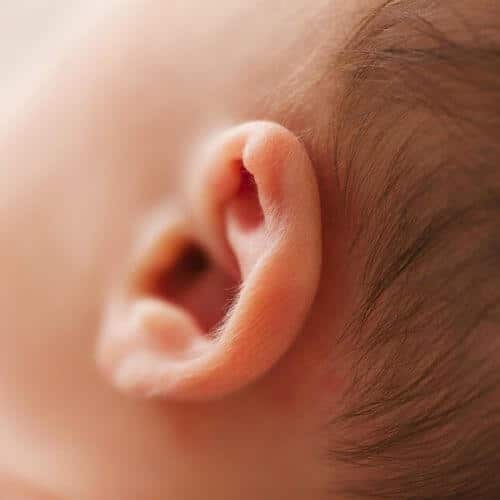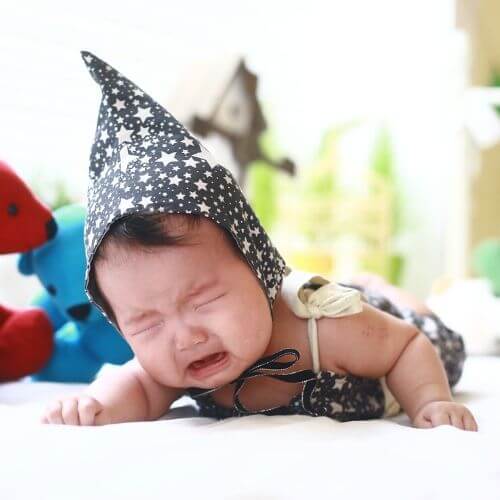
Have you ever seen your child crying for no reason? Do they touch their ear very frequently and you cannot figure out what is wrong?
It could be an infection in their ear or something else. We explore how to tell what is going on.
Table of Contents
What is An Ear Infection?
Ear infection are medically known as, otitis media or otitis externa, and are one of the most common types of infections in babies and children. Infections of the outer, or inner ear are primarily caused by bacteria vs viruses or fungal infections.
A middle ear infection is characterized by the accumulation of fluid behind the eardrum. These types of ear infections occur more frequently in children as compared to adults and can present to a doctor with various symptoms.
Ear Infection vs Common Cold
Ear infection in infants and toddlers is the second most common disorder after the common cold. An ear infection may sometimes miss the diagnosis because of the similarity of its symptoms with a common cold and flu.
It is also interesting to note that while both the conditions are different, ear infections generally start with a cold accompanying a persistent cough.
Infants and children are more prone to ear infections because of the poorly developed immune system and relatively shorter eustachian tube.
Although it is difficult to differentiate between the ear infection and common cold, certain signs and symptoms are exclusive to ear infections. Knowing these signs can help in identifying ear infection.
Signs of An Ear Infection
1. Crying More Than Normal

Crying more than usual indicate a problem in a child. While crying may be a sign of a lot of conditions, the presence of ear infection is pretty much on the cards. Look for additional symptoms to exclude or diagnose an ear infection. Because of the increased pressure in the ears due to infection, the child may be more irritable and fussier than normal.
2. Ear Drainage

Accumulation of fluid causes intense pressure on the eardrum that leads to its rupture. Although not a common occurrence in ear infection, draining of yellow, thick fluid is a sure symptom of ear infection. A ruptured eardrum is not a cause of concern as it heals on its own. The child feels relieved after draining because of reduced pressure in the ear.
3. Fever
Fever is a common symptom in a variety of conditions. A high body temeprature is the sign that the body is fighting against infection. Ear infection in the child raises the body temperature with a fever classified when the child’s temperature is measured at 38˚C (100.4˚F) or above.
4. Difficulty Sleeping

Baby with an ear infection has trouble sleeping. There is also a problem with staying asleep. Although the baby may show signs of activeness throughout the day but becomes cranky and irritable when lying down for sleep. This is due to alteration of ear pressure in the middle ear while sleeping causing pain and uncomfortable feeling.
5. Poor Coordination
Ears are stato-acoustic organs. They are meant only for hearing but also maintain balance and coordination. The inner ear is the balancing center. Increased pressure in the inner ear lead to clumsiness, and difficulty in coordination. Alteration in inner ear pressure also causes dizziness, nausea, and the buzzing of the infected ear.
6. Loss Of Appetite
A child with an ear infection starts avoiding diet and has a loss of appetite. This may be due to multiple reasons. The pathogens may invade the gastrointestinal tract and upset the stomach causing diarrhea and vomiting. Increased ear pressures pose difficulty in chewing and swallowing of food. Feeling unwell is another reason for reduced appetite.
7. Hearing Problem
Accumulation of fluid in the inner ear results in a hearing problem in babies. Infants, who are not able to speak, are unresponsive to sounds while older children, with an ear infection, frequently ask “what?” during the conversation. However, the hearing loss is temporary and reversed after the infection subsides and the fluid disappears from the ear.
8. Pulling The Ear
Among various reasons, an ear infection is one reason for babies tugging their ear. To alleviate the pain and discomfort experienced due to ear infection, many babies pull their ears. Many babies, especially under the age of one year, do not identify the exact location of the pain. Such babies hit their ears due to increased pressure.
Common Causes
Various causes are attributed to increased risk of ear infection in babies as compared to adults.
- Babies and children have immature immune system thus require a lot of effort in fighting off infection.
- They have short Eustachian tube, which gets easily accumulated with fluid.
- Babies are more prone to allergic reactions and passive smoking.
- Babies who do not breastfeed are at higher risk because of the non-availability of antibodies present in breast milk.
- Babies who are bottle-fed are at risk of milk entering the eustachian tube leading to inflammation.
Treatment
As ear infections are very common in children the NHS recommends you don’t always need to see a GP straight away as they can resolve on their own within 3 days.
If you do see a docotr then they may prescribe antibiotics to get rid of an infection, while other medications such as acetaminophen and ibuprofen are prescribed to alleviate the symptoms of fever and pain respectively.
